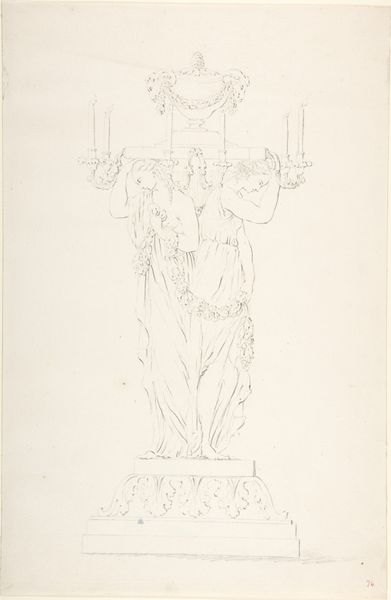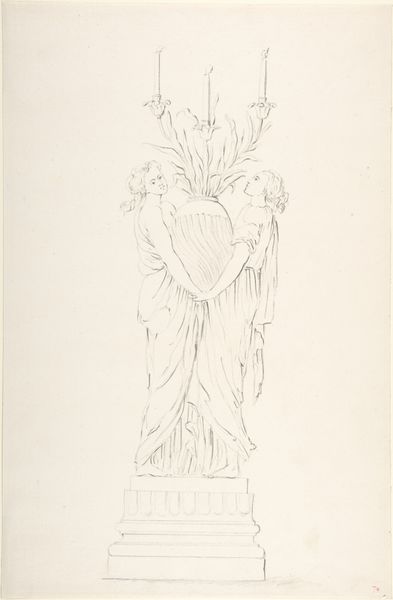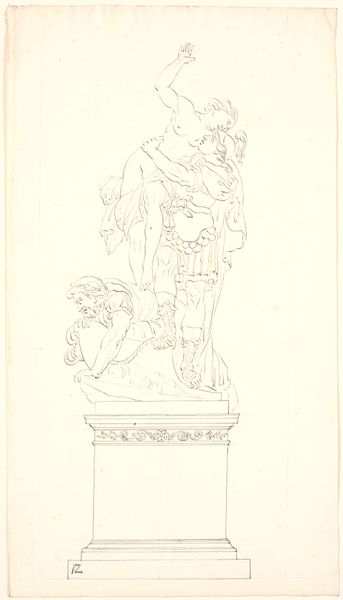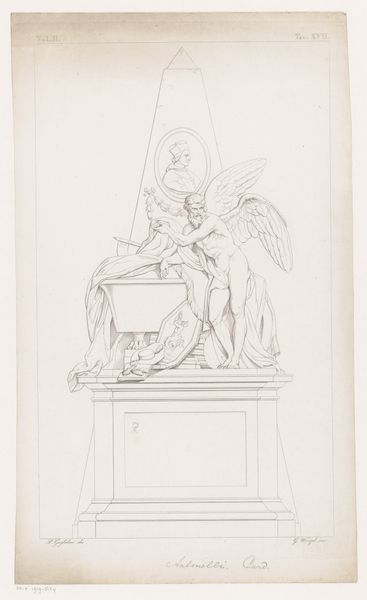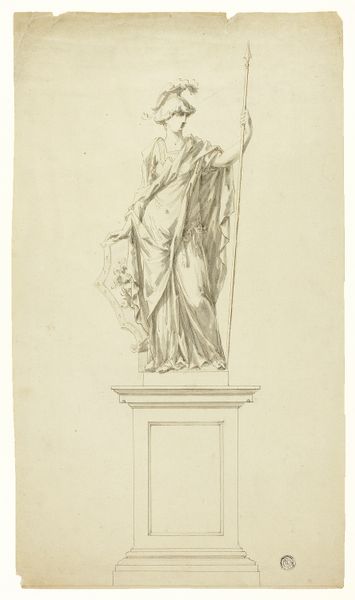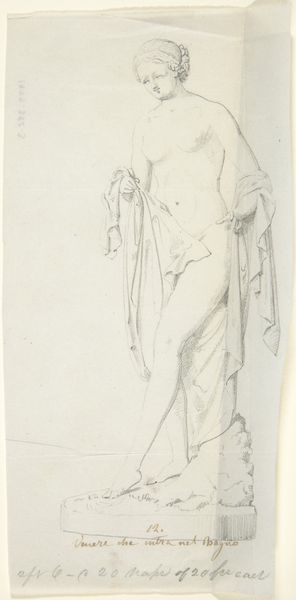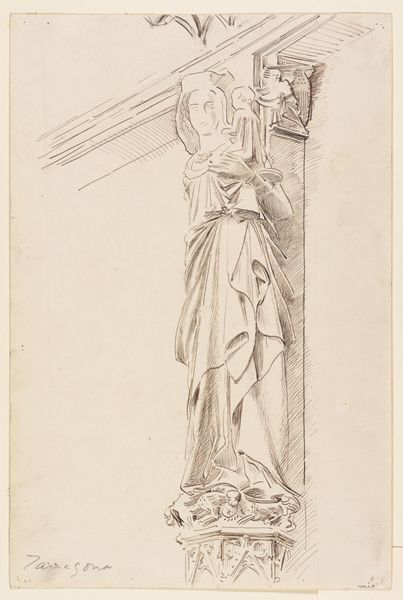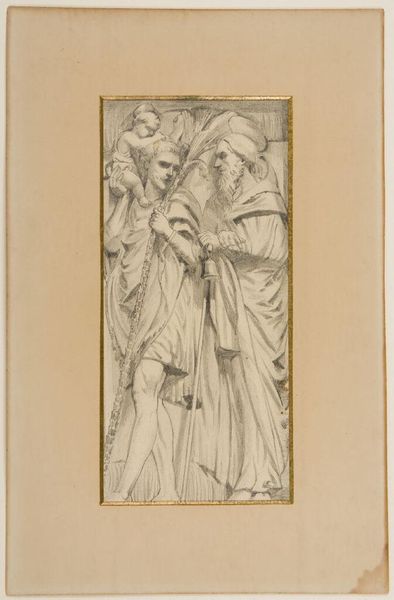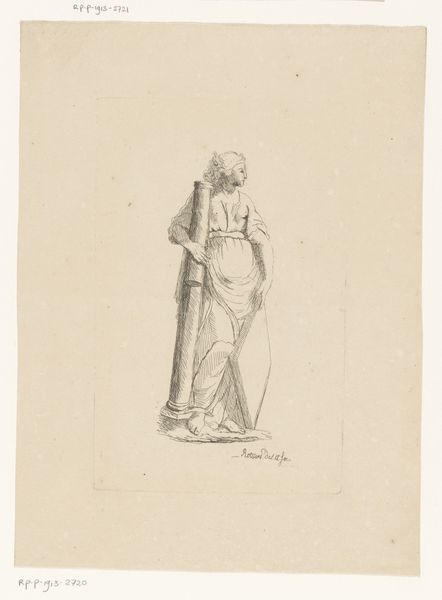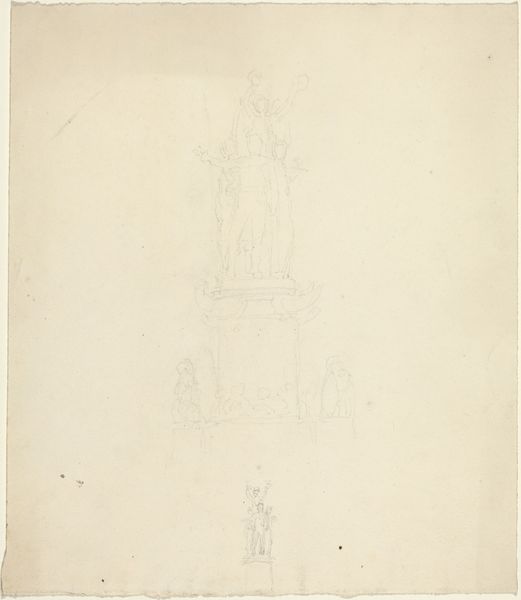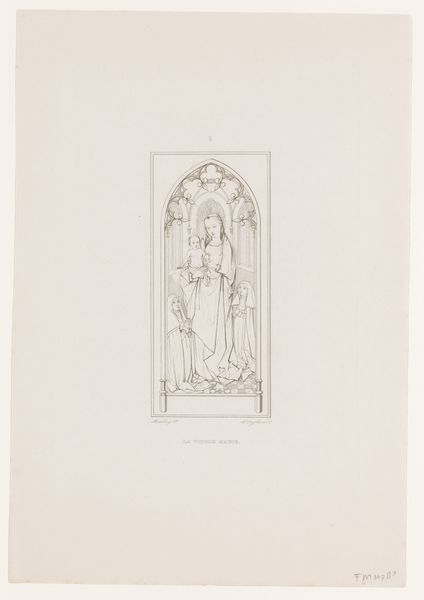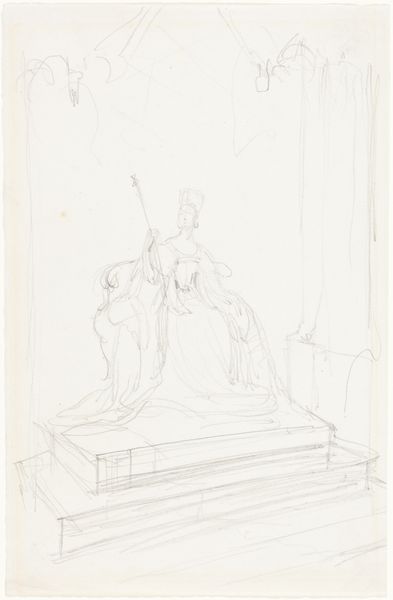
drawing, print, pencil
#
drawing
#
neoclacissism
# print
#
pen sketch
#
pencil sketch
#
figuration
#
form
#
pencil
#
decorative-art
Dimensions: 9 7/16 x 14 3/4 in. (24 x 37.4 cm)
Copyright: Public Domain
Editor: This is a design drawing for a candelabra, made sometime between 1765 and 1795. It looks like pencil and print, currently held at the Metropolitan Museum of Art. The sketch seems to present a fusion of classicism and functionality, with the draped female figures acting as supporting elements, but also purely for aesthetic beauty. What strikes you when you consider this work? Curator: What strikes me immediately is the ambition inherent in a design like this. It's not merely about illumination, is it? We see here a statement about status, taste, and perhaps even political leanings through embracing Neoclassicism. This piece directly engages with the visual language of power. Think about who would have commissioned such an elaborate design, where it would be placed, and the message it would send. Editor: So the choice of neoclassical design suggests more than just aesthetic preference? Curator: Exactly. Neoclassicism, popular during this period, was embraced by elites partly because it evoked the perceived virtues and stability of ancient Rome. The style became intrinsically linked to notions of order and enlightened leadership, making it the perfect artistic language to communicate specific ideals. Are these ideals effectively translated, in your opinion? Editor: I hadn’t considered that link to power so directly. I see how this sketch subtly hints at a society deeply concerned with projecting a certain image. Knowing that, I wonder how accessible such imagery was. Who was *really* supposed to be viewing this candelabra? Curator: An excellent question! And it leads us to consider how the art market, the patronage system, and social hierarchies shaped both the production and the reception of art during this era. Thank you, that really makes me think about how objects like these operate within cultural frameworks! Editor: I see the piece through a different lens now – less as a simple design and more as a marker of a very specific historical and social environment.
Comments
No comments
Be the first to comment and join the conversation on the ultimate creative platform.
